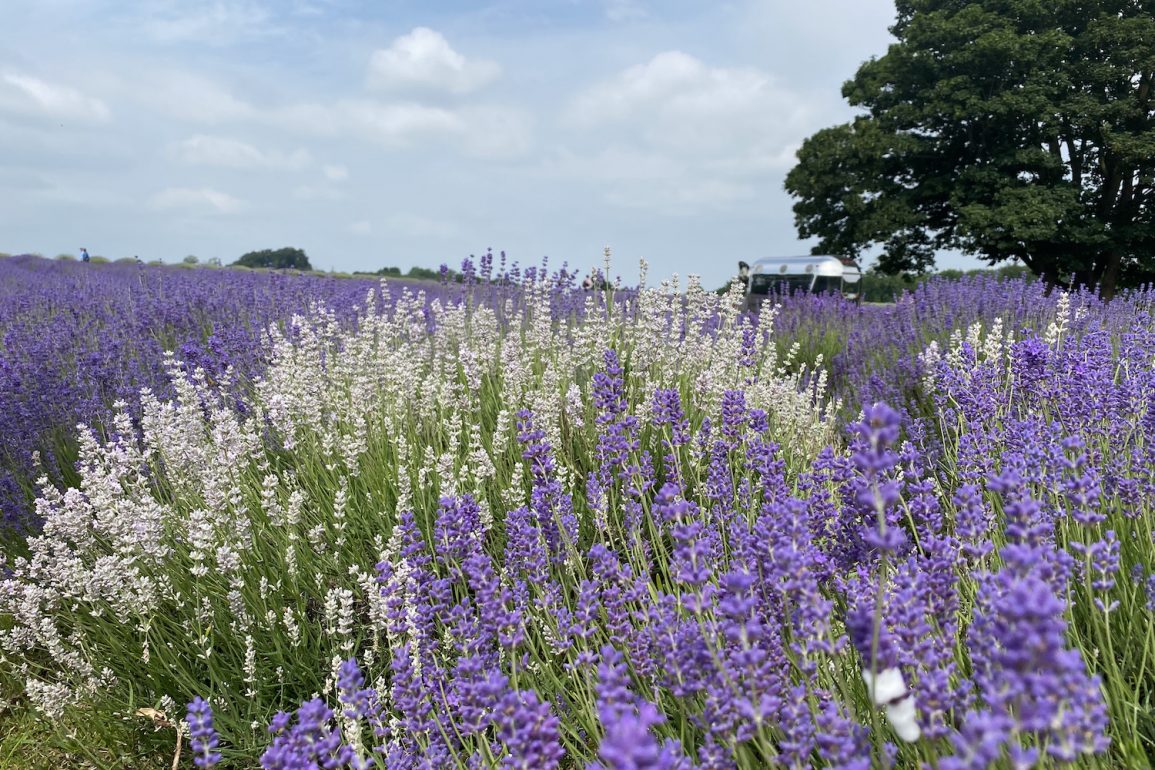The Versatility of Lavender – Vibrant in colour and generous with a sweet, floral fragrance, who would not be enchanted by Lavender. The multipurpose flowering herb found in the mint family can be used in many ways to promote good health and well-being.
The Lavender plant is known by the botanical name Lavandula angustifolia dates as far back as 2,500 years and the wonderful aroma from the oil of the lavender plant is believed to help promote calmness and wellness as well as helping to reduce stress, anxiety, and possibly even mild pain.
The spike-like flowers with multiple tiny purple blossoms are known to represent purity, silence, devotion serenity, grace, and calmness. In addition to the flower’s significance, its purple colour also comes with great symbolism.
In ancient times, it was commonly used as a holy herb and was also often used to freshen up and give a light scent to a variety of personal items, such as clothes and hair. Today, the herb is highly regarded for skin and beauty and is used in fragrances and shampoos to help purify the skin as well as some versions being used to add flavour to baked goods and foods.
For an enchanting day out visiting one of the many Lavender fields in the United Kingdom is a worthy visit, where you can enjoy not only the stunning views of rows upon rows of this beautiful purple treasure, the heavenly scent but the innovative selection of goods generally available to purchase produced with the historical plant.
Women Talking have tried and tested Hitchin Lavender in Hertfordshire and Mayfield Lavender in North Surrey Hills, both offering unique qualities for a family adventure.
Benefits that can be found from Lavender.
Health – Lavender is most used in aromatherapy the Lavender oil is believed to have antiseptic and anti-inflammatory properties, which can help to heal minor burns and bug bites as well as a beneficial treatment when it comes to treating anxiety, insomnia, depression, and restlessness and possibly even mild pain.
Lavender is used to help relieve pain from headaches, sprains, toothaches, and sores.
Skin and hair conditions – Topical use of lavender oil might help to treat a disease called alopecia aerate, which causes a person’s hair to fall out in patches.
When applied to the skin, lavender oils have shown positive results in helping with eczema, acne, sunburns, and nappy rash.
Fungal infections – A study published in the Journal of Medical Microbiology found that lavender oil could be effective in combating antifungal-resistant infections.
The researchers found that the oil was lethal to a range of strains that can cause disease in the skin.
In the study, the essential oils distilled from the Lavandula genus of the lavender plant seemed to work by destroying the membranes of fungal cells.
The study showed that Lavandula oil is potent and demonstrates antifungal activity on a wide spectrum.
Premenstrual emotional symptoms – Many women of reproductive age experience a range of symptoms in the premenstrual phase, commonly known as premenstrual syndrome (PMS).
Even though PMS is common, no single treatment is universally recognised as effective. As a result, many women turn to alternative therapies, such as aromatherapy and lavender might help to alleviate premenstrual emotional symptoms.
Sleep aid – Once upon a time, lavender was recommended for people suffering from insomnia or other sleep disorders. People stuffed their pillows with lavender flowers to help them fall asleep and get a better night’s rest. Studies have shown that lavender oil can not only help you fall asleep but also improve the overall quality of rest. Try rubbing one or two drops of lavender oil on your pillow, or apply directly to your feet, temples, and wrists.
Culinary – Some studies suggest that consuming lavender as a tea can help digestive issues such as vomiting, nausea, intestinal gas, upset stomach, and abdominal swelling.
In Germany, lavender tea has been approved as a supplement to treat sleep disruptions, restlessness, and stomach irritation.
Lavender tea’s nutrition facts demonstrate why this tea is so great for health. Lavender contains high concentrations of vitamin C, vitamin A, calcium, and amino acids that aid overall health. These compounds help to boost the immune system.
Lavender Tea Recipe
Lavender tea can be made using dried or fresh lavender buds. You can find lavender tea bags or loose-leaf varieties at your local grocery store. Lavender oil, culinary lavender, and lavender syrup can also be used for iced tea varieties. You can also grow your own lavender plants at home and make fresh, homemade tea in minutes. Start by harvesting lavender bunches from your plants. Remove the flower buds from the stems and leaves. The lavender leaves are not used for brewing tea, so only keep the flower buds. You’ll need about two teaspoons of lavender buds for every eight-ounce cup of water. Use only one tablespoon for dried flower varieties.
Instructions
Fill a medium sized teapot with filtered, purified, or spring water and bring to a rolling boil.
Add the lavender flowers to a tea ball, tea infuser, or tea sachet and place inside the teapot. Leave the flower buds in the teapot for 10 minutes to steep.
Remove the lavender buds and the tea tools from the kettle. Carefully pour the hot water into teacups and enjoy the crisp, floral taste of simple lavender tea. Add a dash of honey to turn this simple tea into lavender honey tea.
Lilly Light


